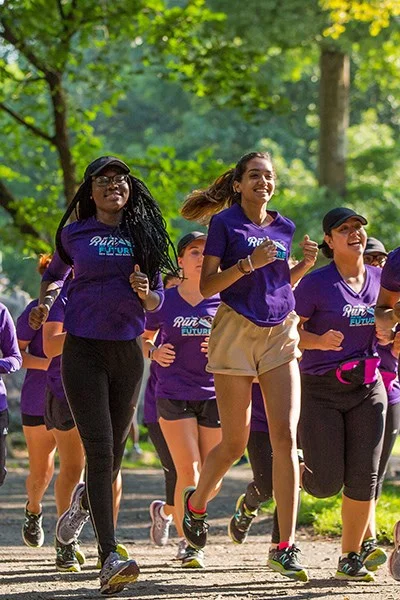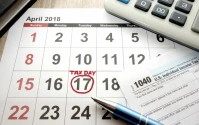Every so often, we witness an event that’s more than just an event. It’s a data set, a living, breathing experiment playing out in real time. We’re used to seeing this in controlled labs or massive server farms, but on November 2nd, one of the world's largest experiments in human potential will unfold on the streets of New York City. We call it a marathon, but I think of it as something more: a 26.2-mile, 55,000-person stress test on the limits of the human spirit.
This year, the New York Road Runners have done something fascinating. They’ve curated a small sample from this massive data set, calling them “Team Inspire.” It’s a group of 26 runners, each representing a mile of the course, whose stories are meant to encapsulate the entire race. It’s a brilliant way to focus the narrative, to give us a lens through which to view this beautiful, chaotic expression of humanity. (New York Road Runners Reveals 26 Most Compelling 2025 TCS New York City Marathon Athletes—Team Inspire) And within that hand-picked group is a story so profound, so emblematic of where we are headed, that it stops you in your tracks.
It's the story of Ali Truwit. And it’s a story not just about running, but about the incredible symbiosis between human resilience and technological innovation.
The Human Algorithm Rebooted
To understand what’s happening here, you first need to understand Ali’s journey. She was a collegiate swimmer at Yale—an elite athlete operating at peak performance. Then, in 2023, the unthinkable happened: a shark attack that resulted in the loss of her left foot. For an athlete, this is a catastrophic system failure. It’s a hardware problem that threatens to crash the entire operating system. The physical and psychological trauma is an event from which many would, understandably, never fully recover.
But this is where the story pivots from one of tragedy to one of breathtaking reinvention. This is where humanity’s oldest software—unbreakable will—meets humanity’s newest hardware. Less than a year after an event that should have ended her athletic career, Ali Truwit was standing on a podium at the 2024 Paris Paralympics with two silver medals around her neck and new American records to her name. When I first read about Ali's timeline—from devastating injury to Paralympic medalist in under a year—I honestly had to sit back in my chair, speechless. It's a testament to a kind of resilience that almost defies calculation. (Set the Pace Episode 130 Ali Truwit - New York Road Runners)
How is that even possible? The answer lies in the fusion of her spirit with a piece of technology: a running blade.

We tend to think of prosthetics as replacements, tools meant to restore a fraction of lost function. But this is an outdated model. What we’re seeing now is something far more profound. Ali’s running blade isn’t just a substitute for a foot; it’s a piece of bespoke bio-mechanical hardware, a carbon-fiber interface designed to translate the force of her will directly into forward motion. It’s less like a crutch and more like a custom-written piece of code designed to integrate with the human operating system, unlocking a new form of performance. It doesn't just replace what was lost; it co-creates a new reality.
This is the kind of breakthrough that reminds me why I got into this field in the first place. We're not just building gadgets; we're building tools that allow us to rewrite our own limitations. What does it truly mean for our future when the gap between a devastating setback and a world-class comeback can be bridged not just by courage, but by carbon fiber and computer-aided design?
A City-Sized Proving Ground
Ali’s story is the powerful, concentrated epicenter, but the TCS New York City Marathon is the earthquake that ripples out from it. Her journey with Team Inspire scales this concept up to a staggering degree. The marathon itself becomes a platform, a massive, open-air gallery showcasing 55,000 different stories of transformation. You have first-timers, charity runners, and seasoned veterans all running the same course on the same day—it’s this incredible, chaotic, beautiful real-time expression of human spirit that no computer simulation could ever hope to replicate.
NYRR talks about the "transformative power of running"—which can sound a bit like marketing-speak, but what they’re really describing is a neurochemical and psychological feedback loop. You push your body past its perceived limits, your brain rewires itself for resilience, and that new resilience then allows you to push even further. It's an iterative process of self-improvement. Now, imagine that process amplified by technologies that are becoming more accessible and integrated every single day.
Think about it. We all carry supercomputers in our pockets that track our pace, heart rate, and elevation. We wear shoes with carbon plates and hyper-responsive foams developed in advanced materials labs. And for athletes like Ali, custom prosthetics are turning points of recovery into launchpads for new achievements. The marathon is no longer just a test of human endurance; it’s a demonstration of a human-plus-tech ecosystem.
This raises some incredible questions for all of us. As these technologies become more integrated into our lives, how do we define what is "natural" versus "enhanced"? Ali’s foundation, Stronger Than You Think, helps provide prosthetics to young women and girls, which is a powerful act of paying it forward. But what is our collective responsibility to ensure these transformative technologies are accessible to everyone who needs them, not just the privileged few? Are we building a future where technology helps level the playing field, or one where it creates new forms of inequality?
Rewriting the Source Code of Resilience
What we're about to witness on November 2nd is more than a race. It's a preview of the future. Ali Truwit isn't just running 26.2 miles; she's running into a new paradigm, demonstrating that our physical forms are not fixed limitations but adaptable platforms. She, and the 55,000 other runners alongside her, are showing us that the source code of human resilience can be debugged, upgraded, and rewritten. They are living proof that the most powerful processor in the world is still the human heart, and when you pair it with the right technology, the things we once considered impossible start to look like the next starting line.









